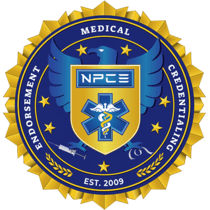The Pathway from High School Student to Certified Phlebotomist
How High School Students Can Get Phlebotomy Certification: A Step-by-Step Guide


Are you a high school student considering a career in healthcare? Getting your phlebotomy certification could be the perfect way to jumpstart your journey. With the growing demand for healthcare professionals, becoming a certified phlebotomist opens doors to entry-level medical jobs, clinical experience, and future educational opportunities.
In this article, we will explain what phlebotomy is, the benefits of early certification, and how high school students can become certified phlebotomists—even before graduation.
What Is Phlebotomy?
Phlebotomy is the practice of drawing blood for tests, transfusions, donations, or research. Phlebotomists are trained to safely collect blood samples, label and store them properly, and work directly with patients in clinics, hospitals, and laboratories.
Why Should High School Students Consider Phlebotomy Certification?
Getting certified as a phlebotomist during high school offers several advantages:
- Early Entry Into Healthcare: Start gaining experience in the medical field before college.
- Job Opportunities: Certified phlebotomists can earn $17–$25/hour in many states.
- Resume Boost: Stand out on college or nursing school applications.
- Flexible Work Options: Work part-time or during summers while continuing your education.
Can You Get Phlebotomy Certification in High School?
Yes! While state requirements vary, many certification programs accept students as young as 16 or 17 with parental consent and a high school diploma or GED. Some states also allow students to enroll in phlebotomy training programs while still in high school as part of Career and Technical Education (CTE).
How to Become a Certified Phlebotomist as a High School Student
- Check Your State Requirements.
Each state has different rules. Some states require certification from a recognized organization, while others only require completion of a training program.
- Enroll in an Accredited Phlebotomy Training Program.
Look for training programs through Local community colleges, Vocational schools, Healthcare centers, Online training providers (if accepted by your state) Programs typically include Classroom instruction (anatomy, safety, infection control), Hands-on training (venipuncture, capillary sticks), Clinical externships.
- Pass a Certification Exam.
Top certification bodies include National Phlebotomy Certification Examination (NPCE), merican Society for Clinical Pathology (ASCP), American Medical Technologists (AMT), National Phlebotomy Association (NPA)
These exams test your knowledge of blood collection techniques, patient care, and lab procedures.
- Gain Clinical Experience.
Some programs include externships at hospitals or clinics. This hands-on experience is essential and may be required for your certification.
- Apply for Entry-Level Jobs.
Once certified, you can apply for jobs as a phlebotomy technician in Hospitals, Diagnostic labs, Blood banks, Physicians offices
FAQs About High School Phlebotomy Certification
How long does it take to become a certified phlebotomist?Most programs last 4–12 weeks, depending on the intensity and schedule.
Do I need a high school diploma to enroll?Many programs require you to be at least 17 or have a GED, but some CTE programs allow concurrent enrollment during high school.
Is phlebotomy a good career path?Yes! It is a fast-growing field with strong job security and a stepping stone into nursing, medical assisting, and laboratory sciences.
Final Thoughts
Phlebotomy certification is a smart move for high school students interested in medicine or healthcare. It offers early job experience, enhances your resume, and provides an inside look into the medical field. By taking the initiative now, you can build a foundation for a successful healthcare career while still in school.
